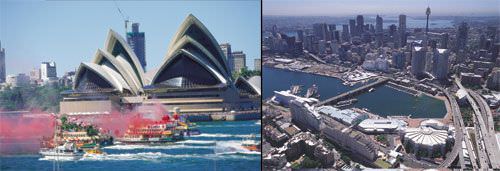For prestige watches Australia’s idiosyncratic market is dissimilar to other countries on the globe. Australians well understand traditional values of fine craftsmanship but strongly competing commercial pressures are manifest for the available discretionary income in this open sunny place.

To understand how to direct more of this money into luxury consumer goods, we need to know what Australians are, the values they have in Australia and its unique lifestyle. This lifestyle is shaped by its geographical remoteness and the ways by which it became a European outpost in the 18th and 19th centuries. A snapshot of Australia, the largest island and the smallest continent on earth, will help.
A thumbnail sketch of Australia
Australia is vast – more than twice the size of all the EU countries taken together and from the European or North American viewpoint it is a remote place. Many in those countries could not put Sydney on the map let alone place Australia accurately on the globe, but as the planes get bigger and more comfortable, Australia gets much closer. Boeing tells us that London to Sydney will soon be a brief, comfortable, 19 hour non-stop flight and of the Airbus A380 Richard Branson dryly comments in a travel promo, “Since you have gaming and you have private double beds maybe there are two ways of getting lucky on a Virgin planeı”
So as the fares come down and intercontinental travel times shrink, Australians are brought closer to the culture of their predominantly colonial British roots. This was inevitably softened by the cultural infusion of the 1850s gold-rush days that brought Italians, Greeks, Swedes, Germans, Poles and Chinese to Australian shores.
Throughout its history, droughts and floods have caused havoc with unsuitable farming ethnicities largely imported (together with rabbits, deer, foxes and noxious weeds) from 19th century England. However the 19th century English also brought plentiful (English) watches and clocks which are to be found throughout the antique shops here today. They did much to establish “collectibility” in this country.
Two more unlike climates are hard to contemplate but this did not stop the colonial English planting (unsuitable) English countryside trees and creating enclaves of ‘Little England’ to remind themselves of ‘Home’ in this far-flung place.
Today, 200 years on, specially adapted dry-land farming techniques have vastly improved the yields available from the available arable land. Isolated stations dot the wide expanse of the arid outback, where the average sheep station is nearly 2,000 square kilometres and cattle stations reach three times that size.
The economy and the people
Each year large chunks of Australia are loaded into ships and sent offshore for a return of about A$32 billion. About a third of this is iron ore, roughly another third is coal and the rest is oil and gas. Each year Australians drink all the wine they possibly can but this still leaves A$2.3 billion of wine creating an export bonanza for growers.
Notwithstanding economic comfort, Australia has an unforgiving climate. Once we move inland from the coastal fringes, the lifestyle can be tough and the work is backbreaking. Children who grow up on the sheep stations are taught by radio (and mother) on the School of the Air, before attending boarding school in the coastal cities. Only about 15% of the population lives inland from the coastal fringe.
The problems and life patterns are largely as unpredictable today as they were 100 years ago. Most of Australia’s 20 million people are currently in the grip of a drought which has brought its water storage levels for the cities to record low levels. Some say it is the permanent effect of global warming and climate change. The reasons notwithstanding, Sydney is a city of 4 million people and its water supply has broken below 40% of storage capacity!
Australia has flourished over this last century and especially with the further Italian, Portuguese, Greek, Hong Kong and English immigration schemes of the 1945 -1970 period. Today Melbourne is home to more Greeks than any city on earth outside Athens, making Melbourne the second largest Greek city in the world! Also flourishing from this is the contemporary Australian population with a very broad exposure to international cuisine, European fashion, culture – and as well, today, very beautiful watches from great makers!
Australians have a high living standard and make beautiful houses, clothes, cars, yachts, food, wine and women – but especially note, we don’t make any beautiful watches – but we do buy them! But who buys them is an interesting question which we will discuss.
TO BE CONTINUED...
In the forthcoming days, the rest of this lenghty survey will be added to our europastar website.
Australian Market Focus: Part 1
Australian Market Focus: Part 2
Australian Market Focus: Part 3
Australian Market Focus: Part 4
Source: June -July 2005 Issue
Click here to subscribe to Europa Star Magazine.





